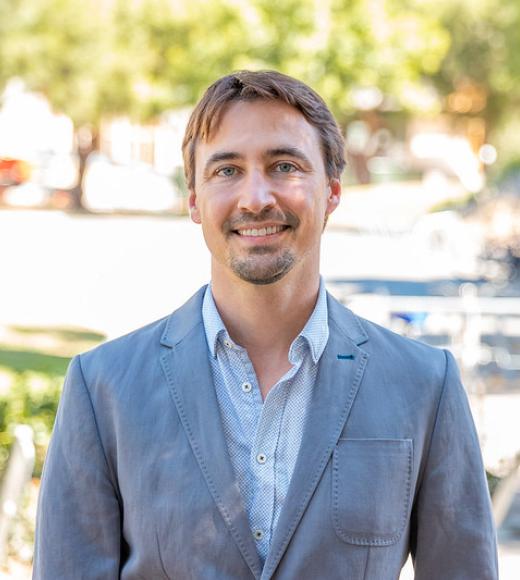Disruptioneering: The Quantum Vacuum for Nanotechnology
ECE lab awarded three-year national grant to eliminate obstacles to making popular devices faster and smaller

Department of Electrical and Computer Engineering Professor Jeremy Munday recently received a $2.2 million grant from the Defense Advanced Research Projects Agency (DARPA) to deepen our understanding of the quantum forces at work in nanotechnology.
The new project evolved from DARPA’s “disruptioneering” series, because its discoveries may have implications for further developments in devices like smartphones, computers, lasers and even vehicle airbags. The project may also illuminate ways to advance new forms of energy harnessed at the quantum level. DARPA funds novel projects like these when it deems them of potential interest to national security and defense.
This is one of several DARPA awards Munday has received in recent years, having also been one of only 25 DARPA Young Faculty Award winners in 2018, then an even more selective DARPA Director’s Fellowship Award in 2020, and another “disruptioneering” project on Thermal Engineering using Materials Physics (TEMP) in 2020.
The next phase of the program, entitled ARRIVE (Applications Resulting for Recent Insights in Vacuum Engineering), is a continuation of the lab’s first two phases of the project, funded by DARPA’s QUEST (Quest for Undiscovered Energy Storage and Thrust) program. In the first phase of the 18-month project, Munday and the research team at his lab formulated theories and ran calculations around two areas of study—the Casimir effect and the spontaneous emission of light from atoms.
Both processes occur in a vacuum, which, at the level visible to the naked human eye, is typically understood as empty space. However, at the quantum level, a force called the Casimir effect begins to interfere with materials sitting in the vacuum, dragging the objects toward one another until they touch. At worst, this can break a nanoscopic device; at minimum, it will affect its functionality.
For the next phases of the project, using a modified Atomic Force Microscope, Munday’s team will study how these forces interact with different types of objects classed as epsilon-near-zero materials, which can manipulate light in strange ways. By running electrical current through these materials, Munday believes that it is possible to modify the vacuum near them and suppress or manipulate the Casimir effect, making it possible to engineer microtechnology and nanotechnology to even smaller scales than what can be done currently.
The further miniaturization of technology will allow devices, such as smartphones, to become faster and more powerful while simultaneously being lighter and even smaller.
The second aspect of the project is to study how different materials may affect the light emitted when an excited atom relaxes until it reaches a ground state, causing it to spontaneously emit light.
“We can modify that emission using these types of materials as well,” Munday said. “You can make a cavity out of this material that has a near-zero index, put in an atom, and make it so the atom doesn’t emit light. That is, you can suppress or modulate the light emission to control atoms and devices.”
But then there is the question of the energy – the project aims to modify the vacuum’s very energy.
“While this energy is not a power source on its own, it may be possible to use it to help make some processes more efficient,” he said. “For example, by modifying how materials emit light, it might be possible to make LED or detectors more efficient (and hence use less power during operation) or have new functionalities. Again, we are at the early stages, but there are a lot of potential future uses.”
After the next two years of testing and research, the Munday Lab team will spend the project’s final year evaluating potential applications for their findings.
“Quantum mechanics has been around since the early 1900s, but we’re still trying to understand it,” Munday said. “There’s a lot of space to still explore.”

